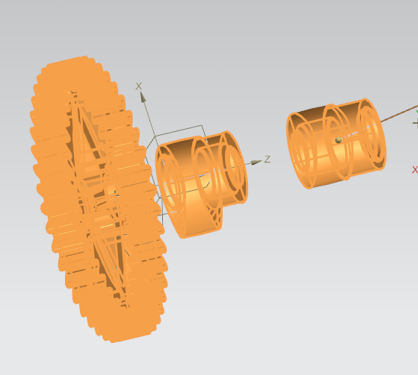From Metal to Plastic: How TPM Helps Customers Cut Costs, Reduce Weight, and Improve Performance

TPM’s in-house design and molding expertise enables smart part conversions that deliver measurable benefits—from CO₂ reduction to cost savings.
At TPM, innovation often begins with a simple question: Can this metal part be made better in plastic? For customers across industries—from lawn and garden to automotive—TPM’s answer is increasingly “yes.”
Danny Mielke, General Manager of TPM’s Hopkins, MN plant, has led several successful metal-to-plastic conversion projects. One standout example is a cam gear originally made entirely of metal. By converting the lobes and gear components to plastic while retaining a metal shaft, TPM helped the customer reduce the part’s weight by nearly 90% and cut costs by more than two-thirds—from $2.95 to just $0.80 per unit.
“We’ve run over 40 million of those cam gears since the conversion,” Mielke said. “The customer was very satisfied.”
Why Convert from Metal to Plastic?
Customers typically initiate these projects to reduce costs, but other benefits quickly follow:
- Weight Reduction: Lighter parts contribute to lower CO₂ emissions and easier handling.
- Cost Savings: Plastic components are often significantly cheaper to produce.
- Improved Performance: In some cases, plastic parts outperform metal. The cam gear, for example, withstood sudden motor stops better due to its slight flexibility.
TPM’s Process:
TPM’s approach begins with understanding the customer’s requirements—load, temperature, and environmental conditions. The team then evaluates whether plastic can meet or exceed those demands. If needed, TPM adds design features to strengthen the part and ensure durability.
Prototypes can be ready in as little as six weeks, with full production possible within six months for simpler parts. More complex conversions may take up to 18 months.
Validation and Collaboration:
TPM works closely with customers during validation, offering in-house and partner testing for force, breakage, and environmental resilience. While most testing occurs on customer equipment, TPM provides full support throughout.
Ideal Candidates for Conversion:
- Gears and Brackets: High-cost metal components with tight tolerances.
- Parts with Complex Geometry: Easier to mold in plastic than to machine or bend in metal.
- Powdered Metal Components: Often good candidates for plastic due to weight and cost advantages.
Hybrid Solutions:
Not every conversion is all-or-nothing. TPM can insert-mold metal components into plastic bodies, creating hybrid parts that balance strength and efficiency.
Looking Ahead:
As tariffs and reshoring initiatives shift manufacturing strategies, converting metal parts to plastic offers a timely opportunity. TPM’s in-house design and automation capabilities make it easier than ever to explore these options.
“We have designers on staff and partners globally who can help justify and implement these changes,” Mielke said.
Ready to Explore Metal-to-Plastic Conversion?
If you’re looking to reduce costs, lighten components, or improve part performance, TPM is ready to help. Our experienced design and molding teams can walk your production line, identify opportunities, and guide you through every step of the conversion process.
Let’s talk about your next project.
📩 Contact Lawrance Griffiths at Lawrance.Griffiths@tpmmfg.com
🌐 Visit tpmmfg.com to learn more.